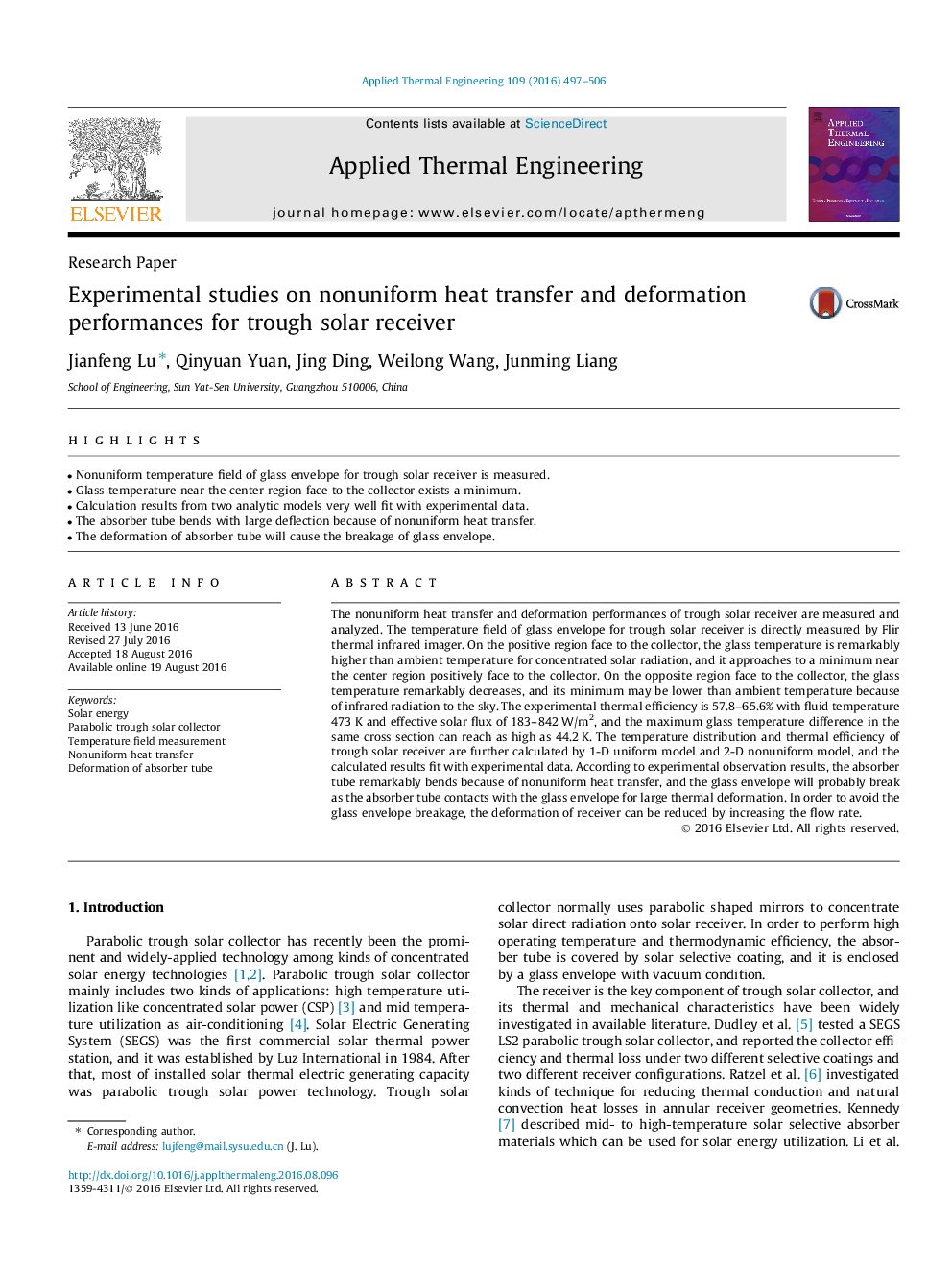| Article ID | Journal | Published Year | Pages | File Type |
|---|---|---|---|---|
| 6481176 | Applied Thermal Engineering | 2016 | 10 Pages |
â¢Nonuniform temperature field of glass envelope for trough solar receiver is measured.â¢Glass temperature near the center region face to the collector exists a minimum.â¢Calculation results from two analytic models very well fit with experimental data.â¢The absorber tube bends with large deflection because of nonuniform heat transfer.â¢The deformation of absorber tube will cause the breakage of glass envelope.
The nonuniform heat transfer and deformation performances of trough solar receiver are measured and analyzed. The temperature field of glass envelope for trough solar receiver is directly measured by Flir thermal infrared imager. On the positive region face to the collector, the glass temperature is remarkably higher than ambient temperature for concentrated solar radiation, and it approaches to a minimum near the center region positively face to the collector. On the opposite region face to the collector, the glass temperature remarkably decreases, and its minimum may be lower than ambient temperature because of infrared radiation to the sky. The experimental thermal efficiency is 57.8-65.6% with fluid temperature 473Â K and effective solar flux of 183-842Â W/m2, and the maximum glass temperature difference in the same cross section can reach as high as 44.2Â K. The temperature distribution and thermal efficiency of trough solar receiver are further calculated by 1-D uniform model and 2-D nonuniform model, and the calculated results fit with experimental data. According to experimental observation results, the absorber tube remarkably bends because of nonuniform heat transfer, and the glass envelope will probably break as the absorber tube contacts with the glass envelope for large thermal deformation. In order to avoid the glass envelope breakage, the deformation of receiver can be reduced by increasing the flow rate.
